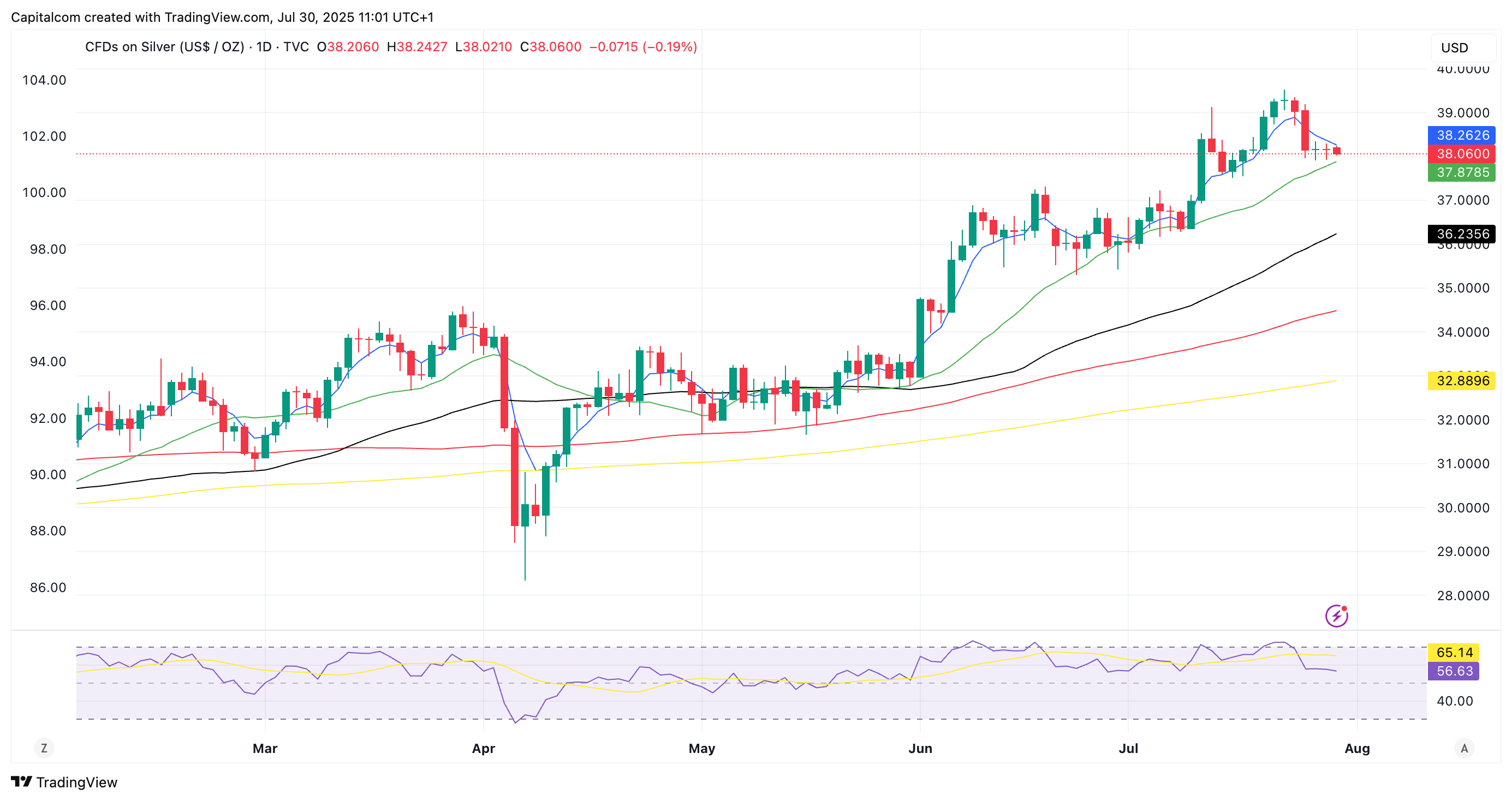Silver Outlook: consolidation ahead of FOMC meeting as fundamental drivers remain
Silver pulls back ahead of the FOMC meeting as rates are expected to remain unchanged given resilient economic data
Silver (XAG/USD) has hovered near the $38.00 mark over recent sessions, pausing after a period of strong upward momentum. Friday’s sharp selloff unwound part of the recent gains, keeping the price pinned below the 5-day Exponential Moving Average—a short-term resistance level. Despite this setback, the retreat appears to be a technical correction rather than a trend reversal, with the bias still skewed to the upside in the short-to-medium term.
From a technical perspective, traders should closely monitor the $37.50 level. A sustained break below this threshold may signal further downside potential, while a close above $38.35 could reaffirm bullish momentum.
Silver (XAG/USD) daily chart

(Past performance is not a reliable indicator of future results)
Fundamental drivers supporting silver prices
1. Monetary Policy and Real Yields
Silver, like other non-yielding assets, tends to benefit when interest rate expectations shift lower. With the Federal Reserve widely expected to keep rates on hold in the near term—and potentially lay the groundwork for future cuts—silver’s appeal has strengthened. Declining real yields reduce the opportunity cost of holding precious metals, making silver an increasingly attractive store of value.
2. Geopolitical and Macro Backdrop
Ongoing geopolitical uncertainties and shifting trade relationships have enhanced silver’s reputation as a safe-haven asset. Yet silver stands apart from gold due to its dual nature—it’s both a financial hedge and an essential industrial input. The metal plays a vital role in the production of solar panels, electric vehicles, and electronics, making it a beneficiary of both risk-off sentiment and renewed global growth optimism from trade disputes being resolved.
3. Structural Supply Deficit
Beyond sentiment, fundamental supply-demand dynamics are also in silver’s favour. Strong industrial demand, combined with tighter mine production, has created a structural supply shortfall. This supply imbalance continues to support prices even as some of the macroeconomic drivers wane.
Risks and Near-Term Uncertainty
Despite the bullish setup, several headwinds could challenge silver’s ascent:
- Hawkish Fed Risk: The most pressing threat lies in the potential for a hawkish pivot by the Federal Reserve. If policymakers further delay expected rate cuts or respond aggressively to renewed inflation pressures, the resulting spike in Treasury yields and the U.S. dollar could dampen silver’s appeal.
- Global Industrial Slowdown: Silver’s industrial side makes it highly sensitive to the health of global manufacturing. Any marked slowdown—particularly in China or other key industrial hubs—could weigh on demand expectations and cap price gains.
As markets await Wednesday’s FOMC meeting, volatility in precious metals may increase. While the Fed is not expected to change its policy stance, any signals on the path of future rate decisions will be closely scrutinized by silver and gold traders alike.